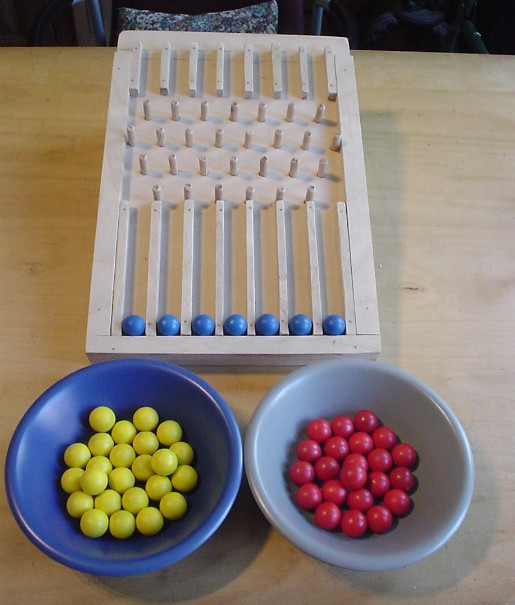
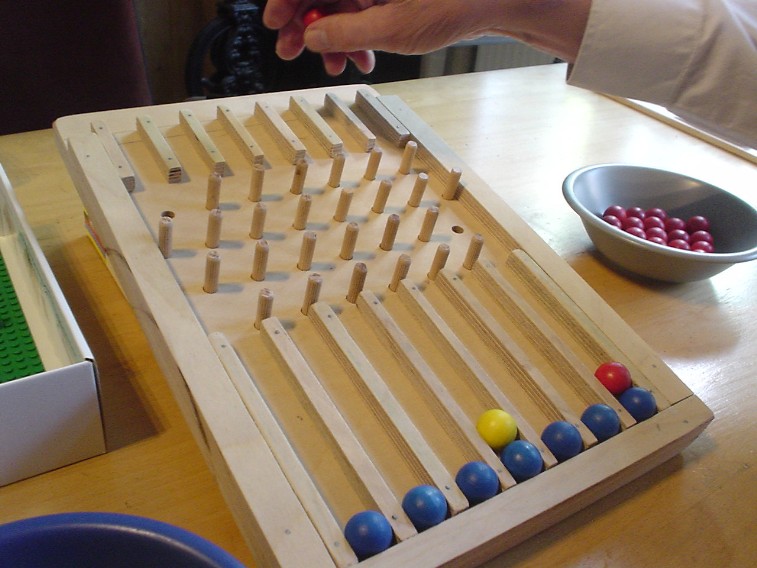
A wooden prototype of the game
Ein Prototyp aus Holz
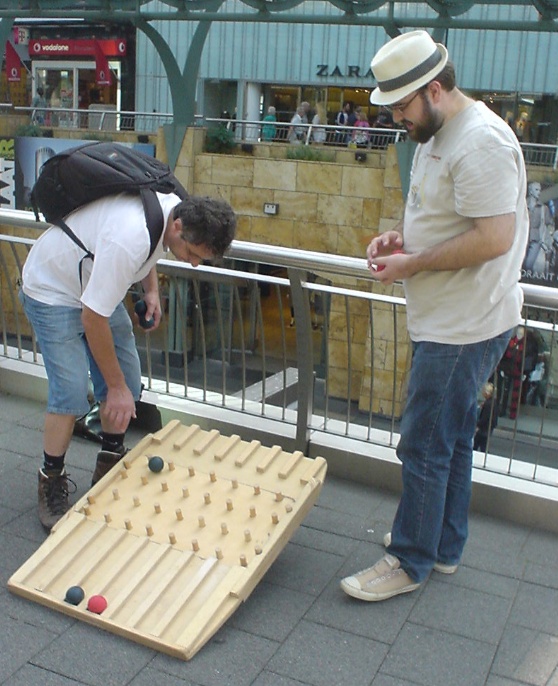
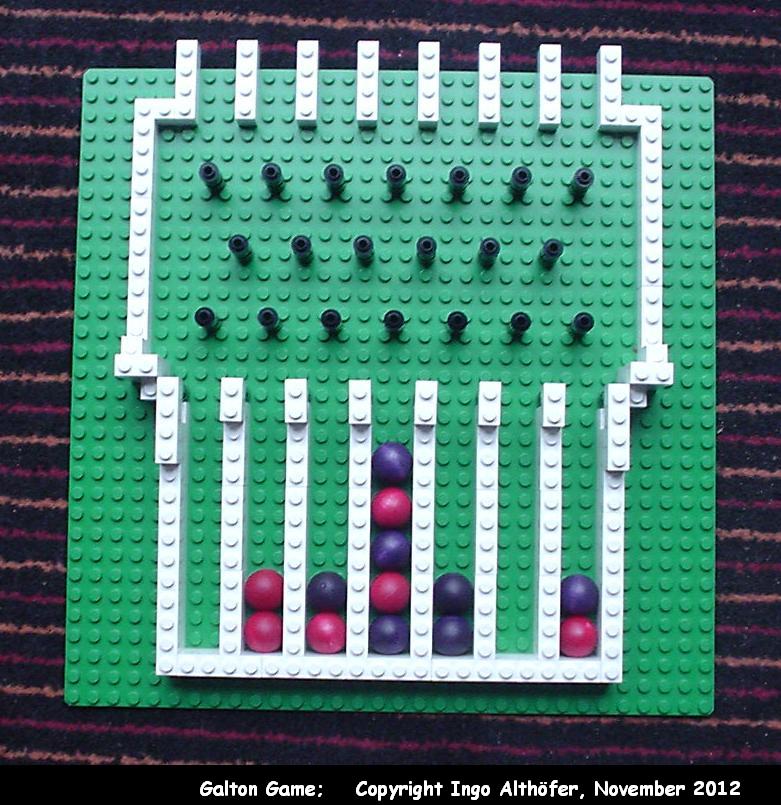
The Galton Game is played by two persons which move in turn.
I got the idea when looking at the classic game "Connect Four"
(invented back in 1973 by Howard Wexler and Ned Strongin),
also known as "Captain's Mistress", "Four Up", "Plot Four",
"Find Four", "Fourplay", "Four in a Line", "Four in a Row".
In addition to the seven columns at the bottom, the Galton Game
board has three layers of obstacles in the upper part. The board
is standing tilted. The player to move drops one ball
of his colour in one of the top entries. The ball rattles through
the nails and ends in one of the columns.
Winning condition is to have four balls of the own colour in row:
either horizontally or vertically or diagonally.
Each column can take up to six balls.
When a ball becomes the seventh ball in a column, remaining
above the column itself, the player takes it out and
drops it again in one of the top entries. For a proper win,
all four balls have to be properly IN columns!
The word part "Galton" in the game's name is meant in memory
of Sir Francis Galton, the inventor of the Galton box.
Das Galton-Spiel ist für zwei Personen, die abwechselnd ziehen.
Die Idee dazu kam mir beim klassischen "Vier gewinnt" (1973 erfunden
von Howard Wexler und Ned Strongin). Der Unterschied besteht in den
drei Reihen von "Nägeln" über den sieben Spalten.
Das Brett steht schräg. Der Spieler, der am Zug ist, wirft
eine Kugel seiner Farbe in einen der sieben Eingänge am
oberen Rand. Die Kugel rattert durch die Nägel und fällt
dann in einen Schacht.
Gewonnen hat, wer als erster vier Kugeln seiner Farbe in Reihe
hat, entweder waagerecht oder senkrecht oder diagonal.
In jeden Schacht passen sechs Kugeln. Wenn eine Kugel als siebente
Kugel in einer Spalte oberhalb des eigentlichen Schachtes liegen
bleibt, entnimmt der ziehende Spieler sie und wirft sie erneut
oben ein. Als Gewinn zählen nur Vierer, bei denen
alle vier Kugeln richtig IN den Schächten liegen!
Mit dem Wortteil "Galton" im Spielenamen möchte ich Sir
Francis Galton ehren, den Erfinder des Galtonbrettes.


A wooden prototype of the game
Ein Prototyp aus Holz
The great Karl Scherer has made a wonderful realization
of Galtoni for "Zillions of Games". Here is a screenshot.
Player Orange wins the game in his current move with
probability 3/4.
Der tolle Karl Scherer hat das Galton-Spiel
wunderschön unter "Zillions of Games" realisiert.
Hier ein Schnappschuss davon. Spieler Orange gewinnt
die Partie in seinem laufenden Zug mit Wahrscheinlichkeit
3/4.
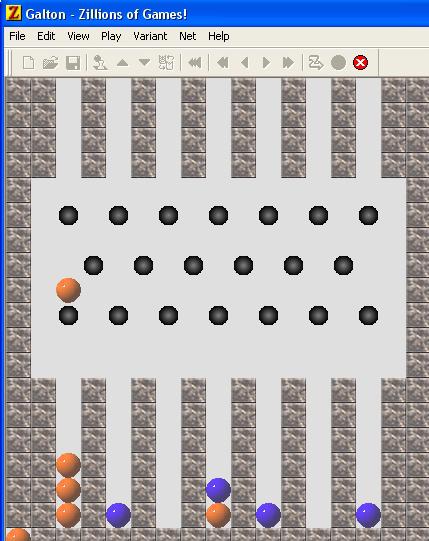
In the meantime Karl has realized also variations of the
Galton Game with only five or even only three slots to throw
in the balls.
In der Zwischenzeit hat Karl auch Varianten des Galton-Spiels
unter Zillions realisiert, bei denen die Spieler die Kugeln nur
in fünf oder sogar nur in drei Eingänge werfen können.
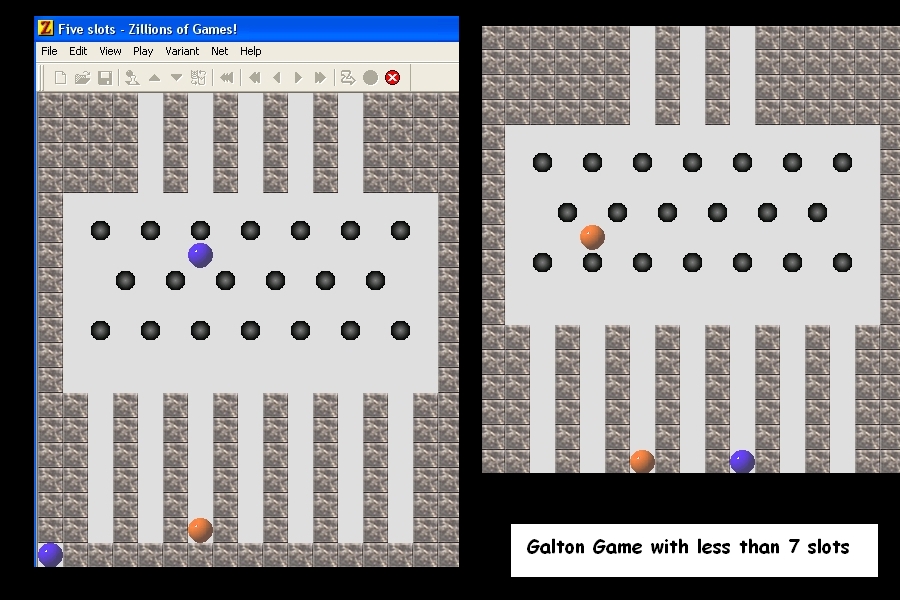
In a version for children of age 3 to 5 one might play with only
one entry for the balls, like in a true Galton box. In this
variant the only task would be to recognize when a player has
four balls of his or her color in row.
In einer Version für Kinder zwischen 3 und 5 Jahren könnte
man auch mit nur einem Eingang spielen, wie bei einem echten Galtonbrett.
Da bestände die ganze Spielaufgabe darin zu erkennen, wann ein
Spieler vier Kugeln seiner Farbe in Reihe hat.